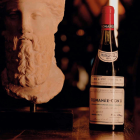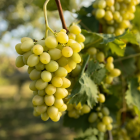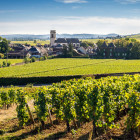
Red Gold Rising in the Vineyards of China
In a blind tasting room in London, sommeliers confidently swirled glasses of what they assumed was premium Bordeaux. The reveal shocked everyone: it was from Ningxia, China.
This moment wasn’t a one-off. It symbolises the rise of a winemaking powerhouse that few saw coming. China may be more associated with baijiu and beer halls than decanters and wine cellars, but the tide is turning. Once a novelty served at government banquets, wine in China is now a serious craft. From the frost-bitten vineyards of Ningxia to the sea-swept slopes of Shandong, a new generation of producers are rewriting the rules.
The journey hasn’t been short. Archaeological excavations in the far western region of Xinjiang have revealed grape cultivation dating back to the 4th century BC. Imagine ancient tombs filled with dried grape remains and grape-cluster carvings. During the Han Dynasty, wine was a luxury reserved for the elite. Records show officials being bribed with bottles.
Fast forward to 1892, and the modern chapter begins. Zhang Bishi, a visionary in fine wine, founded China’s first industrial winery in Yantai. But through most of the 20th century, wine remained something of a sideshow. Political upheaval and grain shortages led to a decline in the production of grape wine.
That started to change in the late 1900s when the Great Wall Wine Company released a dry white wine, signalling a shift toward more serious domestic production. In the decades that followed, China’s economic reforms paved the way for global collaboration. Rémy Martin partnered with local interests to launch Dynasty Wines in Tianjin. Pernod Ricard entered the market with the Dragon Seal brand in Beijing. Louis Vuitton Moët Hennessy chose Ningxia for its Chandon sparkling wine project.
Other players, such as Castel from France and Torres from Spain, also began planting roots in Chinese soil. With foreign expertise, capital, and branding now in the mix, the wheels of transformation truly began to turn.
Inside the vineyards defining China’s wine identity
Walk through a modern Chinese vineyard, and you’ll find more than just grapes. You’ll find ambition.
Over 90 per cent of wine produced is red, driven by consumer belief in its health benefits and elegance. Cabernet Sauvignon reigns supreme, but Merlot and Marselan are catching up fast. A relatively recent arrival, Marselan is a cross between Cabernet Sauvignon and Grenache, prized for its deep colour, supple tannins, and aromatic complexity, making it an increasingly popular choice among quality-focused producers. Native varieties like Longyan add local flavour.
Bordeaux is the reference point, from the grapes to the architecture and even the barrel ageing routines.
But making wine here isn’t easy. Many of the country’s vineyards sit in regions with brutal winters. In the north, vines have to be buried after harvest to survive the cold. Come spring, they’re dug up again. It’s manual, backbreaking work that can inflate production costs by up to a third. This, alone, separates Chinese viticulture from almost every other wine-growing nation.
Historically, many vines were un-grafted, sprawling awkwardly across the land.
These are slowly being replaced with modern, orderly systems that promote even ripening and make the harvest easier. Soil types range from gravel and loam to volcanic sand. In the drier areas, drip irrigation from snowmelt or rivers is essential.
Progress has come a long way. Issues like excessive use of fertiliser, poor canopy management, and a lack of disease control were common even a decade ago. Now, improvements are visible in the glass. Wines show better structure, riper tannins, and more control over elements like volatile acidity, which can lead to vinegary or nail polish-like aromas, and Brettanomyces, a wild yeast known for producing earthy, leathery, or animal notes. The learning curve has been steep, but China is climbing it fast.
There’s one final twist. Because all land in China is state-owned, any change to vineyard layout or planting must be approved. This slows innovation, but it also makes the recent progress even more remarkable.
The regions behind China’s wine revolution
China’s wine story is not a monologue. It’s a chorus of regions, each with its own accent and strengths.
Hebei and Beijing, located near the country's political heart, are home to producers such as the Great Wall Wine Company and Tian Sai. They benefit from market access but face challenges from summer rains and overly fertile soils.
Shandong, hugging the east coast, is China’s production heavyweight. Around 40 per cent of the nation’s wine comes from here, with Yantai as its shining star. Changyu Pioneer Wine Company, founded in 1892, remains the dominant player. Its Noble Dragon white blend has become something of a household name.
Shanxi and Shaanxi are gaining attention. High altitudes and dry, continental climates help craft structured reds. Grace Vineyard in Shanxi is a standout, known for its Bordeaux-inspired wines. The region’s appeal even lured Jean-Claude Berrouet, the former winemaker of Château Pétrus, who now consults in the area.
Ningxia is the name everyone is watching. Tucked against the Helan Mountains, this region is now considered the jewel of Chinese wine. Government support, smart irrigation from the Yellow River, and a wave of young, educated winemakers have turned Ningxia into a fine wine hotspot. Chandon China, Silver Heights, and Château Changyu Moser XV are producing wines with international flair. That now-famous 2011 blind tasting in Beijing, where Ningxia reds outperformed Bordeaux in four of the top five slots, was more than a PR coup. It was a statement.
“We’re not trying to copy Bordeaux.
We’re showing what Ningxia can be.”
- Emma Gao, Founder & Chief Winemaker, Silver Heights
Further west, Xinjiang and Gansu offer vast potential and vast challenges. These regions are dry, remote, and difficult to access, but the terroir is promising. Wineries like Tiansai Vineyards are starting to turn heads.
And then there’s Yunnan. Perched near the Himalayas at up to 3,000 metres, this is a land of dramatic scenery and remarkable wines. Here, the vines don’t need to be buried in winter. The altitude provides natural freshness and complexity. LVMH is invested in the Shangri-La Winery, betting on high-altitude, organic reds to lead the way.
From local curiosity to global contender
China’s wine industry has made remarkable strides, but the journey is far from complete. Domestic production has expanded rapidly; many Chinese consumers remain hesitant about embracing homegrown labels. Imported wines, particularly from France and Australia, continue to dominate the premium end of the market and are often regarded as more established and trustworthy choices.
Interest in Chinese wines is growing, particularly among younger urban drinkers who are more open to exploring local options. However, broader acceptance will depend on ongoing efforts in consumer education and cultural familiarity.
Internationally, Chinese wines have garnered praise and won medals at respected competitions; however, global promotion and trade engagement have not provided the sustained momentum the category needs to truly thrive abroad. Issues such as climate unpredictability and inconsistent quality between producers continue to be ongoing hurdles. Nevertheless, the direction is promising.
China’s wine market was valued at around USD 19 billion in 2023, exports are gradually increasing, and a growing emphasis on sustainability is shaping the future of the industry. With greater investment in organic farming, biodiversity and water conservation, the foundations for long-term success are being laid.
China is not merely treading the path laid by established wine nations. It is carving out its own, rooted in ancient soils and guided by modern ambition. Somewhere in the shadow of Yunnan’s mist-covered peaks or along the quiet, sun-warmed rows near the Helan Mountains, a winemaker is tasting a new vintage, refining the blend, and patiently preparing to surprise the world.
One day soon, that bottle may find its way across continents, opened not with expectation but with curiosity, and remembered not for where it came from but for what it has become.
Related Articles

Bill Koch’s Grand Wine Auction: Region Performance Report
By Jonathan Stevenson

Bill Koch’s Grand Wine Auction: A Collector’s Legacy
By Jonathan Stevenson



